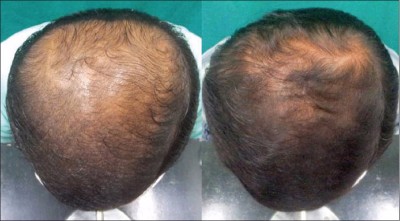Scarless Wound Healing and Hair Regeneration
— From a team led by the most famous hair loss researcher in the world Dr. George Cotsarelis (who has been at it for at least 20 years), comes a new study on how to heal wounds without leaving any residual scars. Key quote from Dr. Cotsarelis:
“Essentially, we can manipulate wound healing so that it leads to skin regeneration rather than scarring. The secret is to regenerate hair follicles first. After that, the fat will regenerate in response to the signals from those follicles”.
I have discussed the link between fat cells (adipocytes) and hair cells many times on this blog, including in the last post on the arrector pili muscle. These latest findings were widely covered by the global media, with headlines such as “The End of Scars“. The Reddit thread on scarless wound healing blew up. However, as with all things Cotsarelis and his headline grabbing findings, one gets the feeling that practical use is at least a decade away.
— Researchers identify how skin cells become hairy or sweaty during the embryonic stage of development. Actual study.
— Replicel’s CEO provided a detailed 2017 forecast, and this was followed up by the release of an important PowerPoint presentation in which the company summarized 6-month results of their RCH-01 product. Key current finding: “mean change in total hair density at 6-months = 6.1% vs 5.0% target”. 70% of responders saw a 14.3% average increase in density at 6-months. While they did not mention 12-month RCH-01 results, they do point out 12-month results from Finasteride (7-14% increase in hair density) and Minoxidil (8-16% increase in hair density) for comparison. Also of note, Replicel partner Shiseido’s Japanese clinical research findings are expected in 2018.
— Aclaris Therapeutics made yet another presentation (pdf downloadable from their press releases page), this time at the 35th Annual JP Morgan Healthcare Conference. At the end of the report they mention that pre-clincial development is now underway for their topical ATI-50003 selective covalently binding JAK 3 inhibitor to treat androgenetic alopecia. However, nothing in the report mentions when they aim to start phase 1 clinical trials. I hope it will be before the end of 2017.
— Follicum announced patent approvals in Russia and in Japan. The company had earlier also announced that they were scheduled to complete the multiple dose part of their clinical phase I/IIa study in January 2017 at the prestigious Charité University Hospital in Berlin.
— Judging from the latest update from Fidia Farmaceutici (Italy), The Dr. Brotzu lotion will not come out as early as some people expected. A lot of people on the hair loss message boards got mad, but a few took it as a positive sign that Fidia is finally releasing dates even if ambiguous i.e., “development of the potential product candidate being completed by 2018”). Ever since I first wrote about Dr. Brotzu, I have not paid much attention to this product. If you are inclined, go through the last 50 pages of this record breaking HLT thread and check out the Italian hair loss forums for more.
— Also from Italy, some kind of PRP plus insulin type of treatment (hard to tell for sure after translation).
— YouTube celebrity Fouseytube got a toupee to cover his bald head and this led to quite a lot of online discussion, including on reddit. In the past, it has also been rumored that Fouseytube has received a scalp micropigmentation treatment.
And now on to medical items of interest:
— Babies born without mothers (via embryos made from male skin cells) will come sooner than expected warn scientists. Surreal.
— Designer babies: an ethical horror waiting to happen? I am all for it even if it turns out horrific.
— Alzheimer’s drug “tideglusib” helps rotten teeth regenerate, reducing the need for fillings.
— Chinese company implants 3D prints blood vessels into monkeys.
